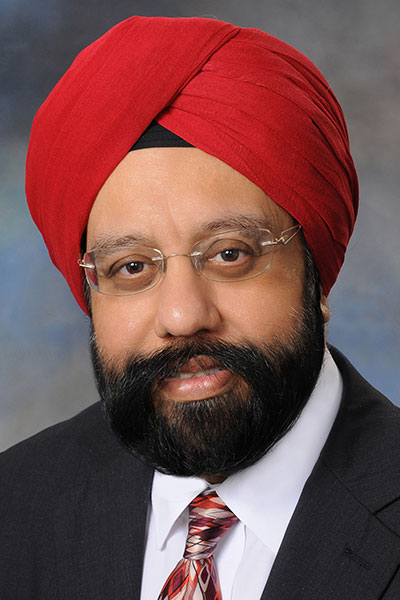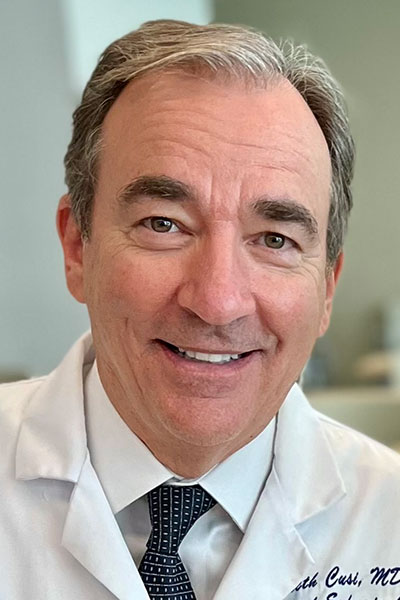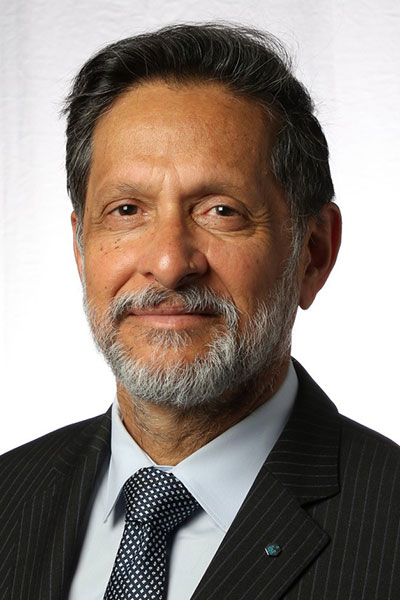The American Diabetes Association® (ADA) recently published its first-ever consensus report on the management of liver disease in people with diabetes. The consensus focuses on clinical strategies and practices to help reduce the risk of metabolic dysfunction-associated steatotic liver disease (MASLD) and its complications.

“MASLD is the most underdiagnosed complication of diabetes,” said Mandeep Bajaj, MBBS, Professor of Diabetes, Endocrinology, and Metabolism at Baylor College of Medicine and Chief of Endocrinology at Baylor St. Luke’s Medical Center. “We need a multidisciplinary approach to diagnose and manage liver disease in diabetes.”
Dr. Bajaj will open the session, The Overlooked Organ—Optimizing Liver Health in Diabetes Management, on Saturday, June 21, from 3:15–4:15 p.m., in Room W184 A–D of the McCormick Place Convention Center. The symposium will address metabolic dysfunction in prediabetes and diabetes that can trigger accumulation of adipose tissue in and around the liver.
Excess fat in the liver triggers an inflammatory cascade leading to steatohepatitis and fibrosis. Over time, increasing fibrosis can lead to cirrhosis, liver cancer, and liver failure.

“This is an old problem that we have overlooked until recently,” said session chair Kenneth Cusi, MD, Professor of Endocrinology, Diabetes, and Metabolism at the University of Florida College of Medicine. “MASLD recommendations became part of the ADA Standards of Care in 2023. Important changes for 2025 include recommending a dual glucose-dependent insulinotropic polypeptide (GIP)/glucagon-like peptide-1 (GLP-1) receptor agonist to treat MASLD in obesity and type 2 diabetes, consideration to combining pioglitazone and a GLP-1 receptor agonist in addition to each as monotherapy, and referral to a gastroenterologist or hepatologist for MASLD with moderate/advanced liver fibrosis.”
Diabetes has historically been associated with microvascular complications, explained Arun J. Sanyal, MD, Professor and Director of the Stravitz-Sanyal Institute for Liver Disease and Metabolic Health at Virginia Commonwealth University School of Medicine.

“People talked about retinopathy, nephropathy, and neuropathy as the three end organs for diabetes,” he said. “Then there was greater appreciation for macrovascular complications and the paradigm shifted from A1C to cardiometabolic outcomes, then cardio-renal-metabolic outcomes. The metabolo-inflammatory milieu is the root cause that links all these end-organ diseases, including liver.”
Patients once tended to die of cardiovascular or kidney disease before liver disease became advanced, Dr. Sanyal added. With improving treatment, more individuals with diabetes live to progress to chronic liver disease and liver failure.
“As research continues, we realize diabetes affects more and more organs and systems,” said Elizabeth A. Beverly, PhD, the Osteopathic Heritage Foundation Ralph Licklider, DO Endowed Professor in Behavioral Diabetes at the University of Ohio Heritage College of Osteopathic Medicine. “About one in four people with MASLD are likely to have depression, one in three are likely to have anxiety, and one out of every two are likely to have high, chronic stress levels.”

“You see very similar numbers in diabetes,” she continued. “We don’t know the mechanisms to explain associations between depression, anxiety, and stress with liver disease, but we hypothesize they might be similar to what we see with diabetes.”
Also in this session, Jay Shubrook, DO, Professor of Primary Care, Touro University California, will discuss metabolic and liver health in the primary care setting. Elizabeth J. Pekas, PhD, the ADA’s Associate Director of Medical Affairs, will discuss the latest in nutrition, physical activity, and exercise. Diana Barb, MD, Clinical Associate Professor of Endocrinology, Diabetes, and Metabolism at the University of Florida, will explore the latest in endocrinology and obesity in liver disease and diabetes.
“This symposium will lead to changes in patient management that will promote early diagnosis of liver disease and improve treatment for all people with prediabetes and diabetes,” Dr. Cusi said.
On-demand access to recorded presentations will be available to registered participants following the conclusion of the 85th Scientific Sessions, from June 25–August 25.

Watch the Scientific Sessions On-Demand after the Meeting
Extend your learning on the latest advances in diabetes research, prevention, and care after the 85th Scientific Sessions conclude. From June 25–August 25, registered participants will have on-demand access to presentations recorded in Chicago via the meeting website.

